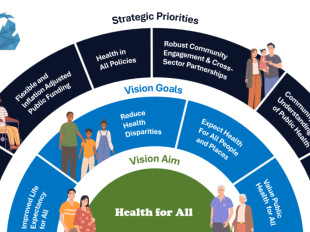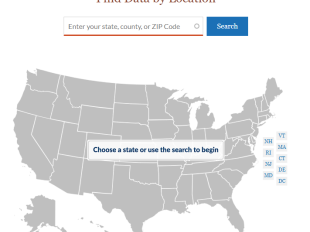Is the County Health Rankings Model Right or Wrong?
Publication date
July 12, 2019
At County Health Rankings & Roadmaps, we continue to be amazed at the broad reach of our County Health Rankings model. We are immensely gratified that the model has resonated with so many that are doing the hard work of improving community health and equity.
In our most recent release of the Rankings, we added an interactive tool to help users understand the various components of the model, focusing on the two aspects of community health that we measure and rank: 1) health outcomes and 2) health factors.
In calculating the ranks for health outcomes, we assign equal importance to length of life and quality of life, assigning both categories weights of 50%. This was our subjective decision to emphasize both how long and how well people live in communities, and we have had relatively little pushback regarding these weight assignments.
In calculating the ranks for health factors, we assign 30% to health behaviors, 20% to clinical care, 40% to social and economic factors, and 10% to the physical environment. Thinking that some people might be surprised by these weights, we provided an oft-quoted working paper (published with the first release of the Rankings in 2010) that discusses how we arrived at these weights. (A summary of this paper is available here, and some follow-up analyses conducted with four years of Rankings data is available here.) Interestingly, recent feedback1 on these weights has not focused on the relative weights of the four components but on how much the weights sum to, specifically that: 1) the weights should add up to less than 100%; and, conflictingly, 2) the weights should add up to more than 100%.
If the County Health Rankings model was developed solely as a model to explain the factors that influence community health, both of these contradictory criticisms could apply:
- While a lot is known about the factors that influence community health, we either do not know nor can we measure all of these factors, hence the suggestion that the weights should sum to less than 100%.
- Even if we did know or could measure all of these factors, many of these factors are connected with each other—thus, capturing all of these interactions could lead to weights that would sum to far more than 100%.
However, the County Health Rankings model was not developed to explain all the factors and interactions between these factors—it was developed to provide a graphical depiction of how we compile the Rankings. There is no one "correct" formula or "true" set of weights that perfectly represents the health of a community. County Health Rankings staff used information from a wide variety of sources to arrive at a set of easy-to-understand weights that reasonably reflect the different components and determinants of health. We believe they are reasonable estimates supported by the best available evidence, balanced with the availability of health data and interpretability. For example, we know that genetics play a significant role in determining individual health (with the expression of these genes even further determined within specific environmental contexts), but we do not include genetics in the Rankings model for two main reasons: at the community level, we cannot measure genetics, nor are genetics feasibly actionable at the population level. Additionally, we don’t claim that all of our clinical care measures encompass all salient measures or that those selected are without limitations, an example being our measure of mammography screening includes only Medicare enrollees. (More information on how we select measures for inclusion in the Rankings is available here.)
So, considering these multifaceted issues, is the County Health Rankings model right or wrong? The answer depends upon on how it is used. Yes, it is true that the model cannot provide a complete picture of everything that impacts or could potentially impact health or equity, as well as their many interactions at the community level. Nevertheless, the model does explain how we rank the health of communities. It also provides one way to think about the relative contributions of various factors to a specific set of health outcomes based on the best available evidence, while further serving as a useful impetus to important discussions about how to improve community health. Throughout our history, there are numerous examples of communities who have used the County Health Rankings model to do just that. You can read some stories about such communities and their remarkable health improvement efforts here.
1 For example, see Krieger N. Health equity and the fallacy of treating causes of population health as if they sum to 100%. Am J Public Health 2017; 107(4): 541-549 or listen to P. Braverman’s presentation at the Drivers of Health Meeting on June 17 (her comments on this general topic begin around the 53 minute mark).



